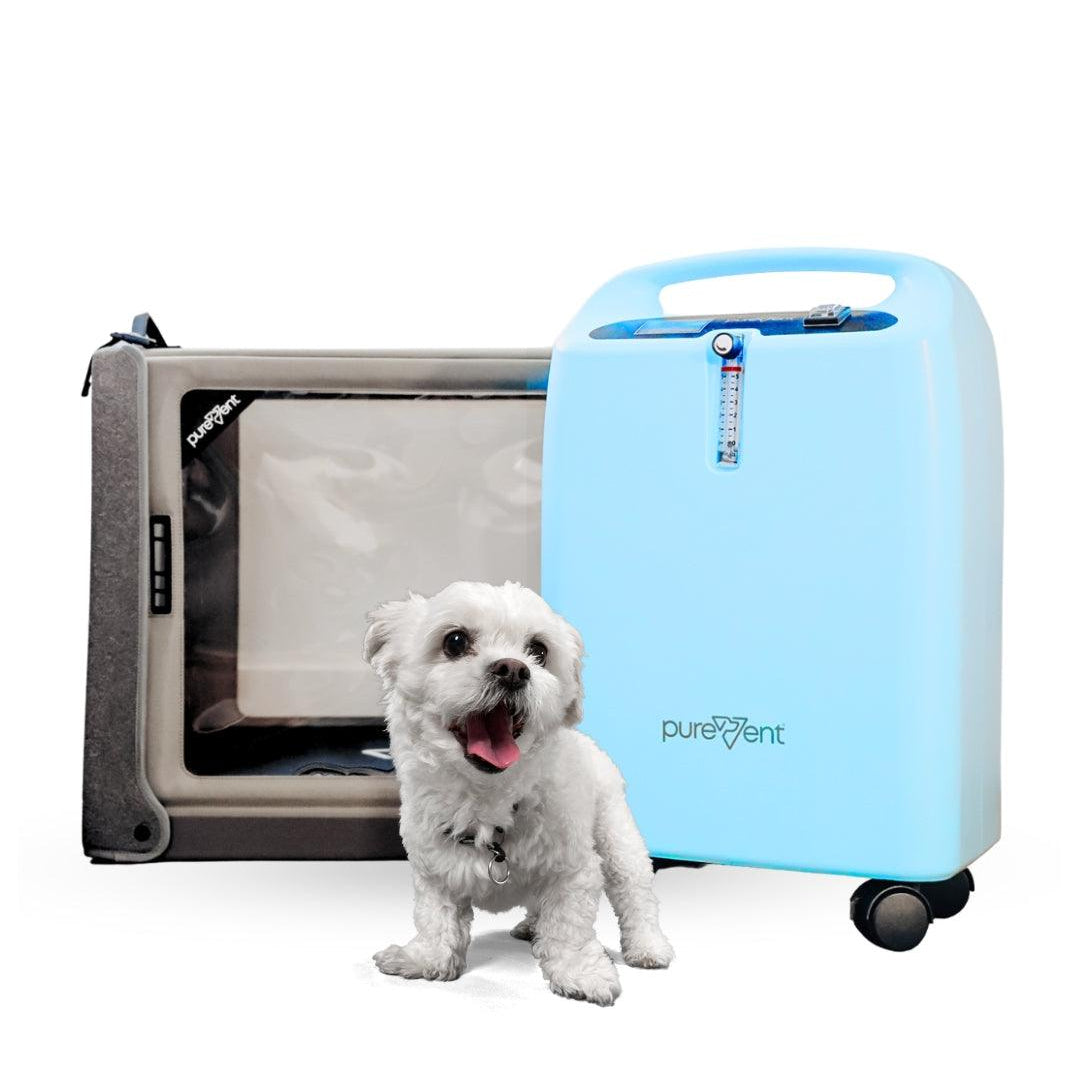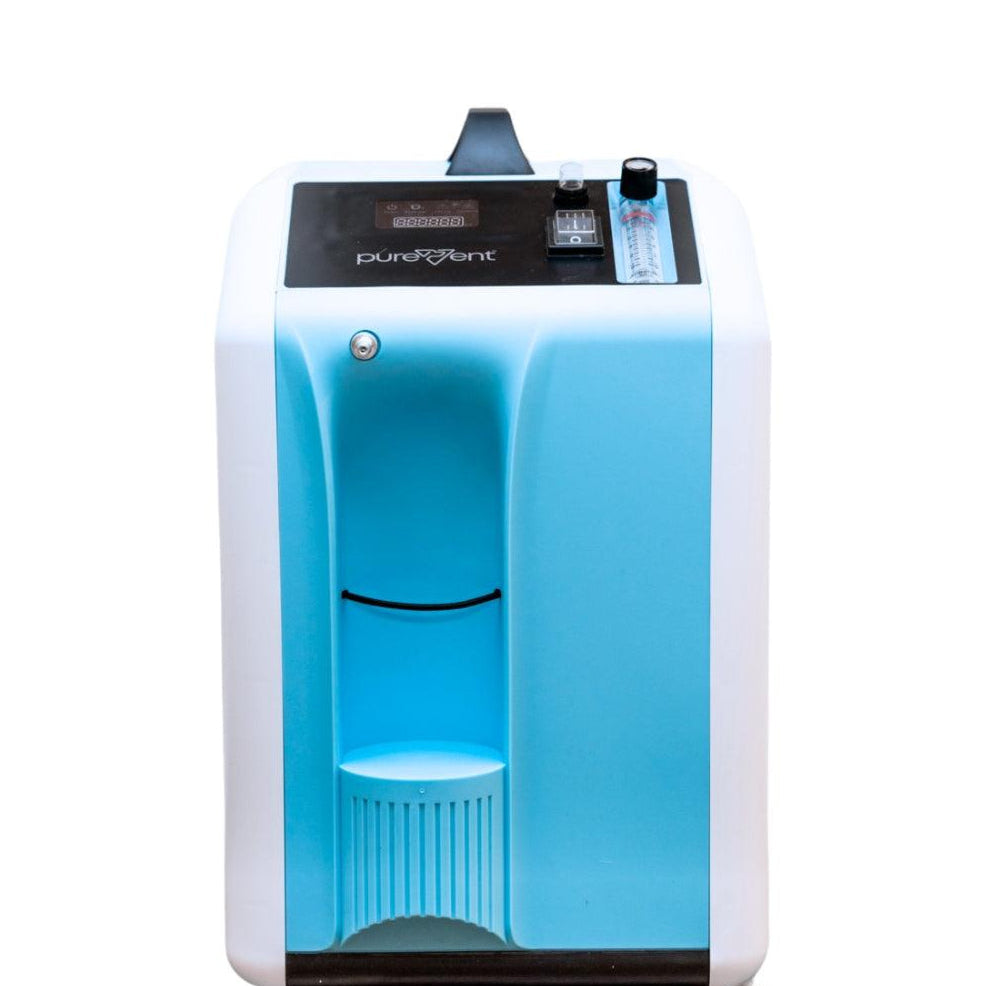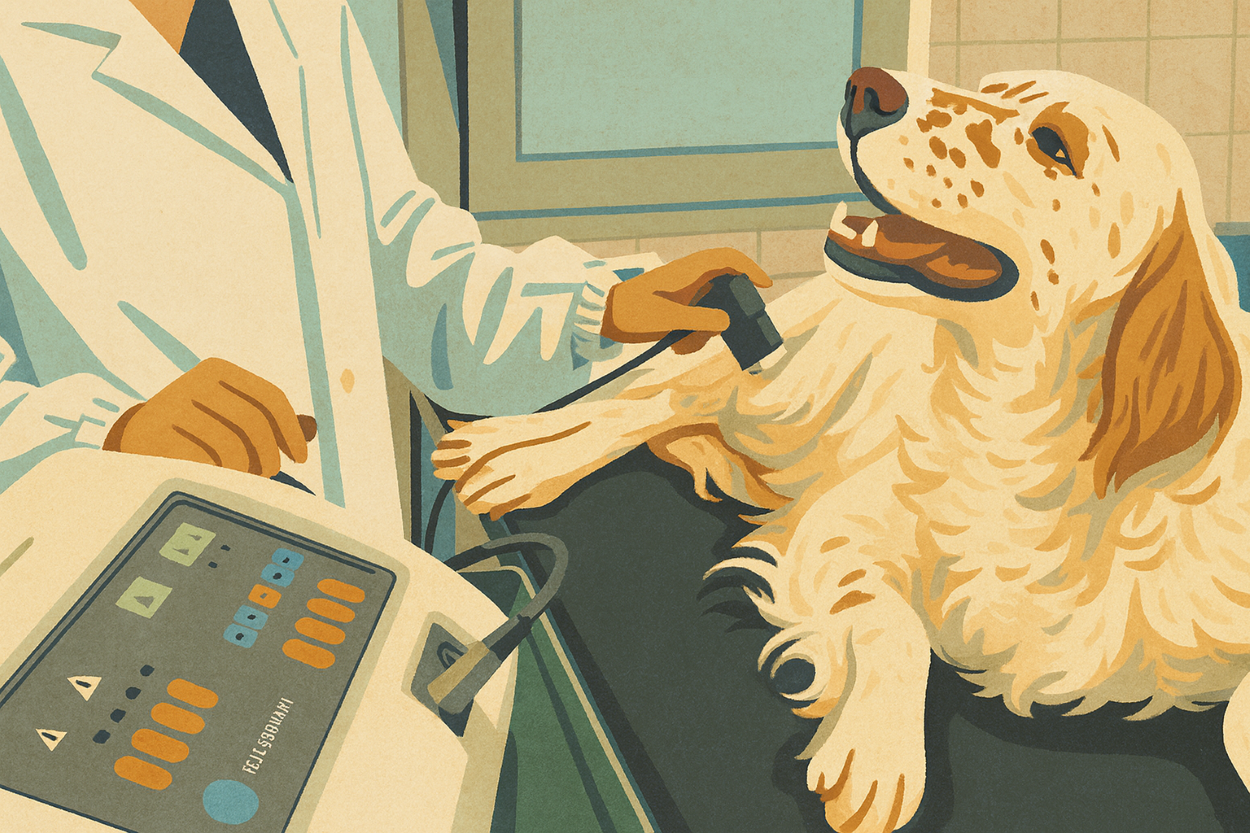Mitral valve disease (MVD) is one of the most common heart conditions affecting dogs, particularly small and older breeds. This progressive disease impacts the mitral valve, a crucial component of the heart that regulates blood flow. When the valve begins to deteriorate, it can lead to heart murmurs, reduced heart efficiency, and potentially congestive heart failure if left unmanaged.
Early detection of mitral valve disease is essential for improving your dog’s quality of life. Recognizing the signs and seeking veterinary care promptly can help slow disease progression and enhance your dog’s comfort and longevity.
In this article, we’ll guide you through the potential signs of mitral valve disease, how it is diagnosed, and what steps you can take to support your dog’s health if mitral valve disease is suspected.
Table of Contents
What is Mitral Valve Disease in Dogs?
Mitral valve disease in dogs is a progressive heart condition that affects the mitral valve, one of the four valves in a dog’s heart. The mitral valve is responsible for controlling blood flow between the left atrium and left ventricle, ensuring that blood flows in one direction. In a healthy heart, the valve opens and closes seamlessly with each heartbeat. However, in dogs with MVD, the valve becomes thickened, misshapen, or weakened over time. This malfunction can cause blood to leak backward into the left atrium, a condition known as mitral valve regurgitation.
As the disease progresses, the heart works harder to compensate for the inefficiency, which may lead to an enlarged heart, reduced cardiac output, and eventually congestive heart failure if untreated.
MVD is particularly prevalent in older dogs and small breeds, such as Cavalier King Charles Spaniels, Dachshunds, and Miniature Poodles. Research suggests that nearly 10% of all dogs develop MVD, with the likelihood increasing significantly with age. Understanding this disease and its progression is crucial for recognizing the early signs and ensuring your dog receives timely care.

Common Symptoms of Mitral Valve Disease in Dogs
Mitral valve disease in dogs often begins subtly, making it crucial for pet owners to stay vigilant for early warning signs. Recognizing these symptoms in their early stages can lead to timely diagnosis and better management of the disease. Here’s what to look for as MVD progresses:
Early-Stage Symptoms
In the initial stages, the signs of MVD are often mild and easy to overlook. However, early detection is vital:
- Mild Coughing: A soft, occasional cough, particularly noticeable at night or after physical activity.
- Lethargy or Reduced Activity Levels: Your dog may seem less enthusiastic about walks or playtime and tire more quickly than usual.
Advanced-Stage Symptoms
As the disease progresses, the symptoms become more pronounced, indicating a worsening of heart function:
- Increased Coughing or Gagging: A persistent, hacking cough that may occur even at rest.
- Difficulty Breathing or Rapid Breathing: Signs of labored or fast breathing, especially during activity or while resting.
- Reduced Appetite and Weight Loss: A noticeable decrease in your dog’s interest in food, coupled with unintentional weight loss.
- Swollen Abdomen (Ascites): Fluid buildup in the abdominal cavity, causing a distended or bloated appearance.
How Symptoms Progress Over Time
Mitral valve disease symptoms typically develop gradually, often starting with subtle changes such as occasional coughing or mild fatigue. As the disease advances, the heart's efficiency declines, leading to more severe symptoms like respiratory distress and fluid retention. Without treatment, these symptoms can significantly impact your dog’s quality of life and may result in heart failure.
Understanding these symptoms and how they evolve is key to seeking veterinary care at the right time. If you notice any of these signs in your dog, consult your veterinarian to discuss diagnostic testing and treatment options. Early intervention can make all the difference in managing MVD effectively.
Is mitral valve disease the same as heart failure?
No, mitral valve disease is not the same as heart failure, though they are closely related.
Mitral Valve Disease:
Mitral valve disease is a condition where the mitral valve, located between the left atrium and left ventricle of the heart, becomes damaged or degenerates. This damage leads to the valve leaking (mitral regurgitation), causing blood to flow backward into the left atrium instead of being pumped out to the body. Over time, this puts strain on the heart and can lead to structural changes and reduced efficiency.
Heart Failure:
Heart failure occurs when the heart can no longer pump blood effectively enough to meet the body's needs. In the context of MVD, heart failure typically arises as a later stage of the disease when the heart’s ability to compensate for the leaky mitral valve diminishes.
How can I tell if my dog is having difficulty breathing?
Signs Your Dog May Be Having Difficulty Breathing
-
Increased Respiratory Rate
- A healthy dog typically breathes 15–30 times per minute at rest.
- If your dog is breathing more than 40 breaths per minute at rest, it could signal trouble.
-
Labored Breathing
- Breathing appears visibly strenuous or effortful .
- You may notice the chest and abdomen moving excessively with each breath.
-
Open-Mouth Breathing or Panting
- Dogs may pant to cool off, but panting without a clear reason (e.g., heat or exercise) can indicate difficulty breathing.
-
Cyanosis (Bluish Gums or Tongue)
- A blue or purple tint to the gums or tongue suggests low oxygen levels in the blood.
-
Coughing
- Persistent or wet-sounding coughs may point to fluid buildup in the lungs, often associated with MVD or heart failure.
-
Nasal Flaring or Noisy Breathing
- Flaring nostrils or unusual sounds like wheezing, gurgling, or snorting could indicate airway obstruction or lung issues.
-
Restlessness or Anxiety
- Dogs struggling to breathe may appear anxious, unable to settle , or move around trying to find a comfortable position.
-
Change in Posture
- A dog having trouble breathing may adopt a “praying” position (front legs extended, chest on the floor) or stand with its neck extended.
- They may refuse to lie down because lying flat worsens breathing.
-
Exercise Intolerance
- Your dog may tire quickly, refuse to play, or struggle with activities they previously enjoyed.
-
Frothy or Pink Fluid
- In severe cases, fluid may back up into the lungs and airways, causing frothy or pink-tinged foam from the mouth or nose.
How do I handle stressful situations for my dog with mitral valve disease?
Managing stress for a dog with mitral valve disease is essential, as stress can worsen their symptoms and potentially lead to complications, such as elevated heart rate, increased blood pressure, or difficulty breathing. Here are practical strategies to handle stressful situations for your dog:
1. Create a calm environment.
2. Avoid overexertion.
3. Avoid or limit stressful events, like meeting strangers.
4. Provide comfort during stressful times.
5. Provide a heart-healthy diet to reduce strain on the heart.
6. Work with your veterinarian to add anxiety-reducing medications or supplements, if needed.
Risk Factors and Breeds Prone to Mitral Valve Disease
Mitral valve disease is influenced by a combination of factors, with certain dogs being more predisposed to the condition than others. Understanding these risk factors can help you assess your dog’s likelihood of developing MVD and take proactive steps toward early detection and care.
Age as a Major Risk Factor
Age is one of the most significant risk factors for MVD. The condition typically develops in middle-aged to senior dogs, with symptoms often appearing after the age of six. As dogs age, the likelihood of wear and tear on the mitral valve increases, making them more susceptible to the disease. Regular veterinary checkups are particularly important as your dog enters their senior years to monitor for early signs of heart issues.
Breeds with a Higher Predisposition
While MVD can affect any dog, certain breeds are genetically predisposed to the condition, particularly smaller breeds. These include:
Cavalier King Charles Spaniels: Among the most at-risk breeds, with a significant portion developing MVD by middle age.
Dachshunds: Known for their susceptibility to heart conditions, including MVD.
Toy and Miniature Poodles: Frequently diagnosed with MVD as they age.
Other breeds that may have an elevated risk include Chihuahuas, Shih Tzus, and Yorkshire Terriers.
The Role of Genetics in the Development of Mitral Valve Disease in Dogs
Genetics play a critical role in the development of mitral valve disease in dogs, particularly in breeds like Cavalier King Charles Spaniels, where the disease is often inherited. Breeding practices that prioritize genetic health can reduce the prevalence of MVD in future generations. If your dog belongs to a high-risk breed, discussing their genetic background with your breeder or veterinarian can provide insight into their likelihood of developing the condition.
By understanding the risk factors and predispositions associated with MVD, you can remain proactive about your dog’s heart health. If your dog falls into a high-risk category, routine veterinary visits and early monitoring can make a significant difference in managing the disease effectively.

How is Mitral Valve Disease in Dogs Diagnosed?
Diagnosing mitral valve disease requires a combination of a thorough physical examination and specialized diagnostic tests. Early detection plays a critical role in managing the disease and slowing its progression, making regular veterinary checkups essential.
Physical Examination by a Veterinarian
The diagnostic process often begins with a routine physical exam. During this appointment, your veterinarian will:
- Listen for Heart Murmurs: Using a stethoscope, the veterinarian will listen to your dog’s heart for abnormal sounds, such as murmurs. A heart murmur is often the first indication of MVD, caused by blood leaking backward through the faulty mitral valve.
While a murmur doesn’t always mean your dog has MVD, it is a key sign that further evaluation is necessary.
Diagnostic Tests
To confirm a diagnosis of MVD and assess its severity, your veterinarian may recommend one or more of the following tests:
Chest X-Rays: These images provide a view of the heart and lungs, helping to detect an enlarged heart or fluid buildup in the chest, which are common signs of advanced MVD.
Echocardiogram (Ultrasound of the Heart): This is the gold standard for diagnosing MVD. It provides a detailed view of the heart’s structure and function, allowing the veterinarian to measure blood flow and detect any abnormalities in the mitral valve.
Blood and Urine Tests: These tests help evaluate your dog’s overall health and rule out other conditions that may affect the heart or complicate treatment, such as kidney disease or infection.
Importance of Regular Veterinary Checkups
Routine checkups are critical for early detection, especially for dogs in high-risk categories. Detecting MVD in its early stages can lead to better treatment outcomes and improved quality of life for your dog. Annual wellness exams, or more frequent visits for senior dogs or at-risk breeds, allow veterinarians to monitor your dog’s heart health closely.
If you notice any signs of MVD or your dog belongs to a high-risk group, scheduling a veterinary exam promptly can make a significant difference. Early diagnosis provides more options for managing the condition and keeping your dog healthy and comfortable.
What Should You Do If You Suspect Your Dog Has Mitral Valve Disease?
If you believe your dog may have mitral valve disease, acting promptly can make a significant difference in their health and quality of life. Here’s what you should do to ensure your dog receives the best possible care:
Steps to Take if Your Dog is Showing Symptoms
Schedule a Veterinary Appointment Immediately: If your dog is exhibiting potential signs of MVD, such as coughing, lethargy, or difficulty breathing, contact your veterinarian without delay. Early diagnosis is crucial for starting appropriate treatment and slowing the progression of the disease. Make sure to mention any specific symptoms you’ve observed when scheduling the appointment so the veterinarian can prioritize your visit if necessary.
Monitor and Record Symptoms: Keep a detailed record of your dog’s symptoms, including:
- When the symptoms began.
- How frequently they occur.
- Any specific triggers, such as exercise or resting.
- Changes in appetite, weight, or energy levels.
This information will help your veterinarian better understand your dog’s condition and recommend the most effective diagnostic tests and treatments.

Avoid Self-Diagnosing or Administering Unprescribed Medications
It can be tempting to research symptoms online or try over-the-counter medications to alleviate your dog’s discomfort. However, self-diagnosing or administering unprescribed medications can be dangerous and may worsen your dog’s condition. Only a veterinarian can accurately diagnose MVD and develop a safe, effective treatment plan tailored to your dog’s needs.
Acting quickly and working closely with your veterinarian are the best steps you can take if you suspect your dog has MVD. By seeking professional guidance and avoiding self-treatment, you’ll be giving your dog the best chance at a healthier, more comfortable life.
HemoSeal Critical Pet Wound Spray is an essential addition to any dog’s first aid kit, providing immediate and effective care for minor cuts, scrapes, and wounds.
Designed to stop bleeding quickly, it uses advanced clotting agents that work to form a protective barrier over the affected area, reducing blood loss and promoting faster healing. This is especially valuable in emergency situations where quick action can prevent complications like excessive bleeding or infection.
Whether your dog has a small paw injury from a hike or a minor scrape from rough play, HemoSeal is a practical, reliable solution to keep on hand.
Treatment and Management of Mitral Valve Disease in Dogs
While mitral valve disease in dogs cannot be cured, effective treatment and management can significantly improve your dog’s quality of life and help slow the progression of the disease. A combination of medications, lifestyle adjustments, adding supplemental oxygen, and regular veterinary care is typically recommended to address the symptoms and maintain heart health.
Medications to Manage Symptoms
Medications are a cornerstone of mitral valve disease treatment and are tailored to your dog’s specific condition and severity of symptoms.
Diuretics: Help reduce fluid buildup in the lungs or abdomen, alleviating coughing and breathing difficulties.
ACE Inhibitors: Improve heart efficiency by relaxing blood vessels and reducing the workload on the heart.
Pimobendan: A common medication that strengthens the heart’s contractions and improves blood flow.
Dietary Adjustments and Weight Management: Maintaining an ideal body weight is critical for dogs with MVD, as excess weight can strain the heart further. Your veterinarian may recommend:
- A low-sodium diet to reduce fluid retention.
- Prescription heart-healthy diets designed to support cardiac function.
- Controlled portion sizes and light exercise, if appropriate, to help with weight management.
Supplemental Oxygen Therapy: In cases of advanced MVD or emergencies, supplemental oxygen can provide relief from respiratory distress. Portable oxygen therapy systems, such as the Oxygen Kit for Dogs provided by Pawprint Oxygen, can be used at home or emergency transport to stabilize your dog’s breathing.
Regular Monitoring and Follow-Up Visits: Consistent veterinary checkups are essential for tracking the progression of MVD and adjusting treatment as needed. Routine diagnostic tests, such as echocardiograms and blood work, will help ensure that your dog’s treatment plan remains effective.

Emphasis on Improving Quality of Life
The goal of mitral valve disease treatment is not to cure the disease but to manage symptoms and enhance your dog’s comfort and well-being. With the right care, many dogs with MVD can lead happy and fulfilling lives for years after diagnosis. By staying proactive and working closely with your veterinarian, you can provide the best possible support for your dog as they navigate this condition.
Prevention and Long-Term Care of Mitral Valve Disease in Dogs
While mitral valve disease in dogs cannot always be prevented, there are proactive steps you can take to reduce your dog’s risk and manage the progression of the disease if it is diagnosed. Focusing on preventive care and long-term management can significantly enhance your dog’s quality of life and overall heart health.
Tips for Reducing Risk and Managing the Progression
Maintaining a Healthy Weight and Diet: Excess weight puts additional strain on your dog’s heart, increasing the risk of MVD or exacerbating its symptoms. To promote heart health:
- Feed your dog a balanced diet with appropriate portion sizes.
- Limit high-sodium foods, which can lead to fluid retention and can worsen heart conditions.
- Consult your veterinarian about heart-friendly prescription diets if your dog has already been diagnosed with MVD.
Regular Exercise, Tailored to Your Dog’s Condition: Exercise is essential for maintaining a healthy weight and cardiovascular fitness, but it should be appropriate for your dog’s age, breed, and health status.
- For healthy dogs, regular walks and playtime can support heart health.
- For dogs with MVD, light, controlled exercise is best to avoid overexertion. Your veterinarian can recommend a safe exercise regimen tailored to your dog’s needs.
Routine Veterinary Checkups and Heart Health Screenings: Regular visits to your veterinarian are vital for early detection and monitoring of heart health. Key aspects of preventive care include:
- Annual wellness exams, or more frequent checkups for senior dogs and high-risk breeds.
- Heart screenings, such as listening for murmurs with a stethoscope and conducting echocardiograms when necessary.
- Routine blood and urine tests to detect any underlying conditions that may impact heart health.
Commitment to Long-Term Care
Managing mitral valve disease is a lifelong process, and consistency is key. By staying proactive with your dog’s weight, exercise, diet, and veterinary care, you can help slow the progression of the disease and maximize their comfort and quality of life. With the right preventive measures and ongoing attention, many dogs with MVD can enjoy long, happy lives even after diagnosis.
When to Seek Emergency Care
While many cases of mitral valve disease in dogs can be managed with regular veterinary care, certain symptoms indicate a medical emergency that requires immediate attention. Knowing these warning signs and being prepared can save your dog’s life.
Signs That Indicate a Medical Emergency
Collapse or Fainting: If your dog collapses or faints, it could indicate a serious cardiac event caused by advanced MVD or arrhythmias. These episodes are often life-threatening and require urgent veterinary intervention.
Severe Difficulty Breathing: Labored or rapid breathing, gasping for air, or an inability to catch their breath are signs of severe respiratory distress. This can occur due to fluid buildup in the lungs (pulmonary edema), which is a common complication of advanced mitral valve disease.
Bluish Gums or Tongue (Cyanosis): A bluish tint to your dog’s gums or tongue indicates a lack of oxygen in their bloodstream. Cyanosis is a critical emergency and requires immediate treatment, such as supplemental oxygen and stabilization at a veterinary hospital.
The Importance of Having an Emergency Plan
Emergencies related to mitral valve disease can happen suddenly, so it’s essential to have a plan in place to act quickly.
Know the Location of the Nearest Emergency Clinic: Keep contact information for emergency veterinary services readily available.
Have a Source of Portable Oxygen on Hand: Portable oxygen therapy systems, such as those provided by Pawprint Oxygen, can be crucial in situations of severe respiratory distress. The Oxygen Kit for Dogs will allow you to administer oxygen at home or during transport to a veterinary facility.
Monitor Your Dog Closely: If your dog has been diagnosed with MVD, keep a log of their symptoms and watch for sudden changes that may indicate a worsening condition.
Recognizing the signs of a medical emergency and acting quickly can make all the difference for a dog with mitral valve disease. By staying prepared and having an emergency plan in place, you’ll be ready to provide the critical care your dog needs when every moment counts.

The Best Chance at a Happy, Fulfilling Life
Mitral valve disease in dogs is a common yet serious condition that can significantly impact your dog’s health and quality of life if left untreated. By understanding what MVD is, recognizing the symptoms, and knowing the breeds and risk factors associated with the disease, you can stay one step ahead in ensuring your dog’s well-being.
Proactive measures, such as regular veterinary checkups, maintaining a healthy lifestyle, and monitoring for signs of progression, are essential in managing mitral valve disease effectively. Treatment options like medications, dietary changes, and supplemental oxygen therapy can help alleviate symptoms and improve your dog’s comfort and longevity.
If you suspect your dog may have mitral valve disease, don’t hesitate to consult your veterinarian. Early diagnosis and intervention are key to slowing the disease’s progression and giving your dog the best chance at a happy, fulfilling life. Remember, staying vigilant and informed is the best way to support your dog through every stage of this condition. With the right care and attention, many dogs with MVD can continue to bring joy to your life for years to come.






















